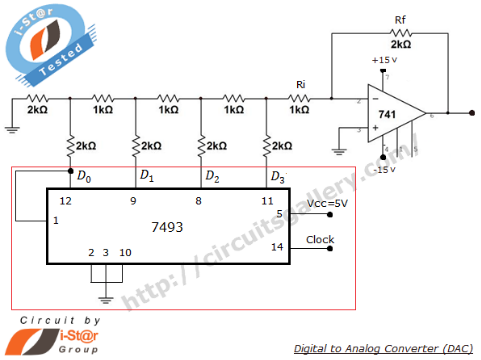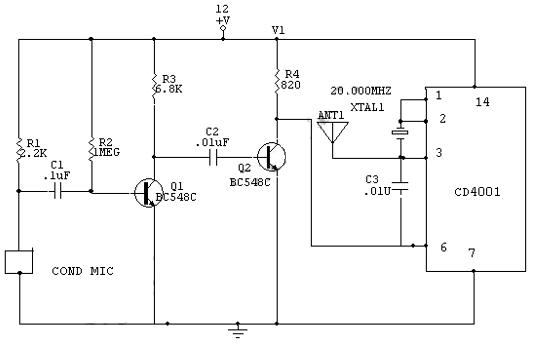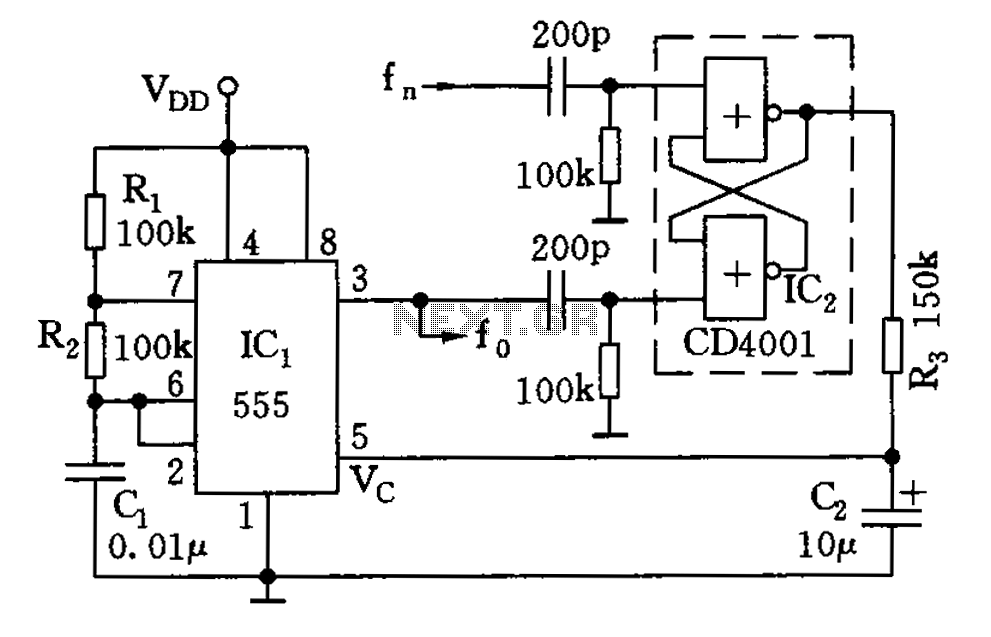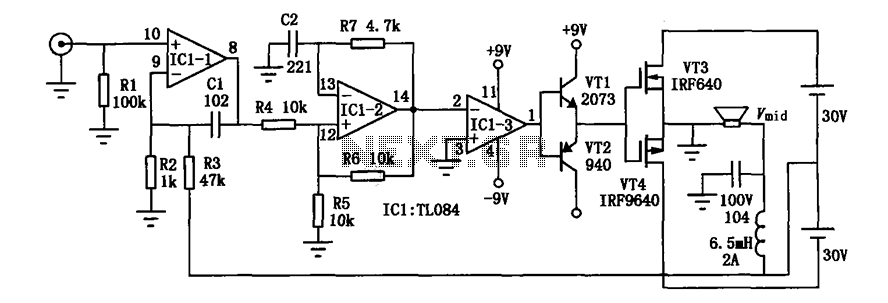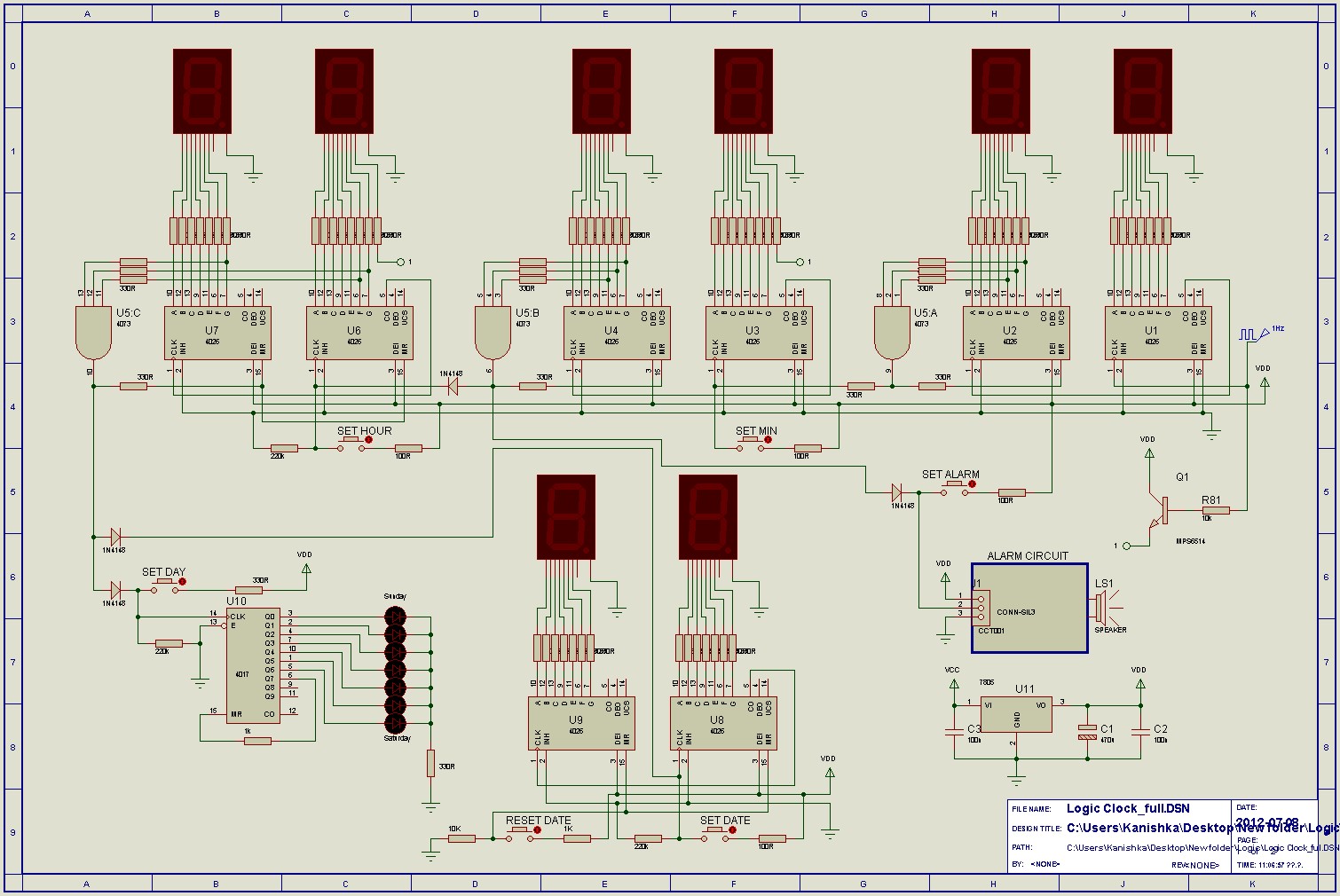
1HZ Standard digital clock
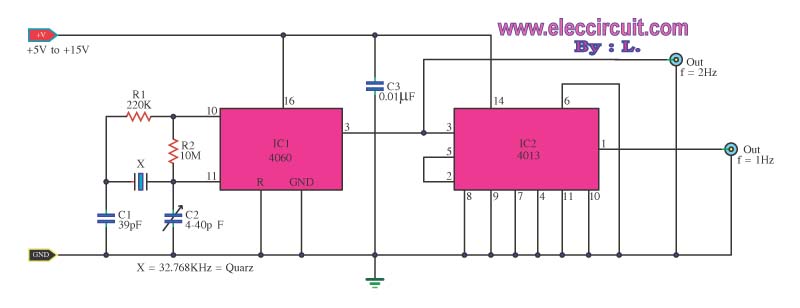
This is a standard digital clock circuit with a frequency of 1 Hz or 2 Hz. It can be utilized in a conventional clock circuit. The circuit comprises IC-4060 and IC-4013.
The digital clock circuit operates by generating a precise time base using the IC-4060, which is a frequency divider and oscillator. The IC-4060 can be configured to produce a stable output frequency by utilizing an external resistor-capacitor (RC) network. The output frequency can be set to either 1 Hz or 2 Hz based on the design requirements. The choice of frequency is crucial as it determines the timekeeping accuracy of the clock.
The IC-4013, a dual D-type flip-flop, is employed to divide the frequency generated by the IC-4060. The output from the IC-4060 is fed into the clock input of the IC-4013, which further processes the signal to create a binary representation of time. The flip-flops can be configured to toggle states based on the clock input, effectively counting the pulses generated by the IC-4060.
In addition to the core components, the circuit may include passive components such as resistors and capacitors for signal conditioning and stabilization. A power supply circuit is also necessary to provide the required voltage levels for the ICs, typically 5V to 15V, depending on the specific model used.
The output of the IC-4013 can be connected to a display module, such as a seven-segment display, to visually represent the time. Additional circuitry may be included to handle functions such as setting the time, adjusting for daylight saving time, or providing alarm functions.
This digital clock circuit can be implemented on a printed circuit board (PCB) for durability and compactness, ensuring that all connections are secure and that the circuit operates reliably over time. Overall, this design provides a straightforward yet effective solution for timekeeping applications in various electronic devices.This is a standard digital clock circuit,frequency size 1 Hz or 2 Hz. It can be used in the normal clock circuit. It consists of IC-4060 and IC-4013, the.. 🔗 External reference
The digital clock circuit operates by generating a precise time base using the IC-4060, which is a frequency divider and oscillator. The IC-4060 can be configured to produce a stable output frequency by utilizing an external resistor-capacitor (RC) network. The output frequency can be set to either 1 Hz or 2 Hz based on the design requirements. The choice of frequency is crucial as it determines the timekeeping accuracy of the clock.
The IC-4013, a dual D-type flip-flop, is employed to divide the frequency generated by the IC-4060. The output from the IC-4060 is fed into the clock input of the IC-4013, which further processes the signal to create a binary representation of time. The flip-flops can be configured to toggle states based on the clock input, effectively counting the pulses generated by the IC-4060.
In addition to the core components, the circuit may include passive components such as resistors and capacitors for signal conditioning and stabilization. A power supply circuit is also necessary to provide the required voltage levels for the ICs, typically 5V to 15V, depending on the specific model used.
The output of the IC-4013 can be connected to a display module, such as a seven-segment display, to visually represent the time. Additional circuitry may be included to handle functions such as setting the time, adjusting for daylight saving time, or providing alarm functions.
This digital clock circuit can be implemented on a printed circuit board (PCB) for durability and compactness, ensuring that all connections are secure and that the circuit operates reliably over time. Overall, this design provides a straightforward yet effective solution for timekeeping applications in various electronic devices.This is a standard digital clock circuit,frequency size 1 Hz or 2 Hz. It can be used in the normal clock circuit. It consists of IC-4060 and IC-4013, the.. 🔗 External reference

